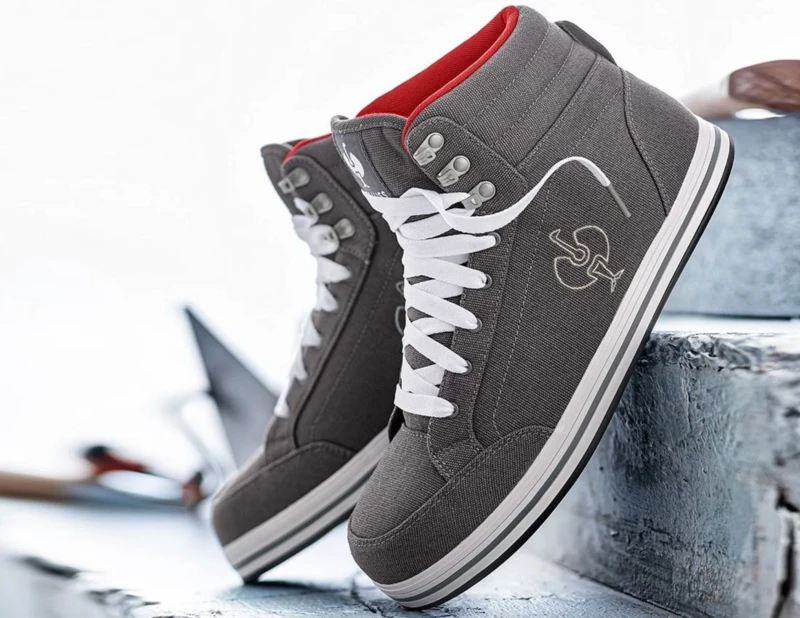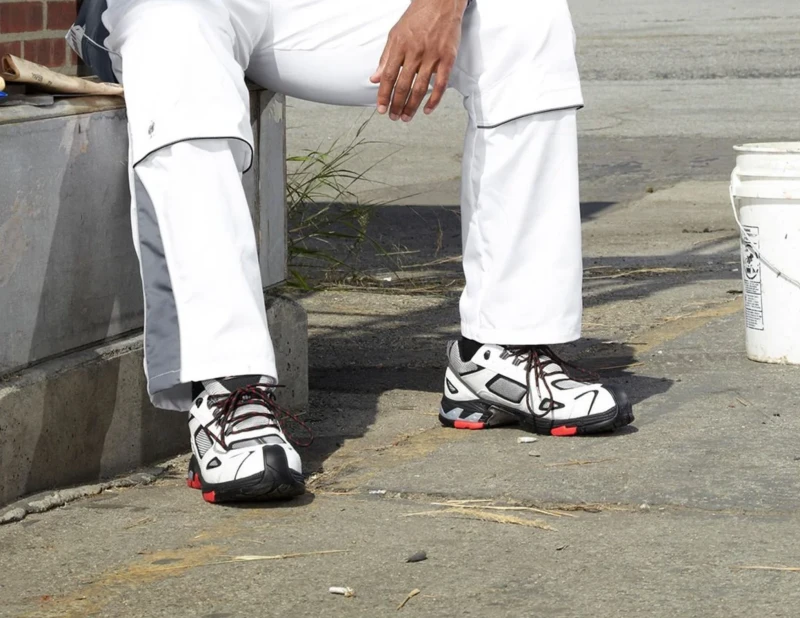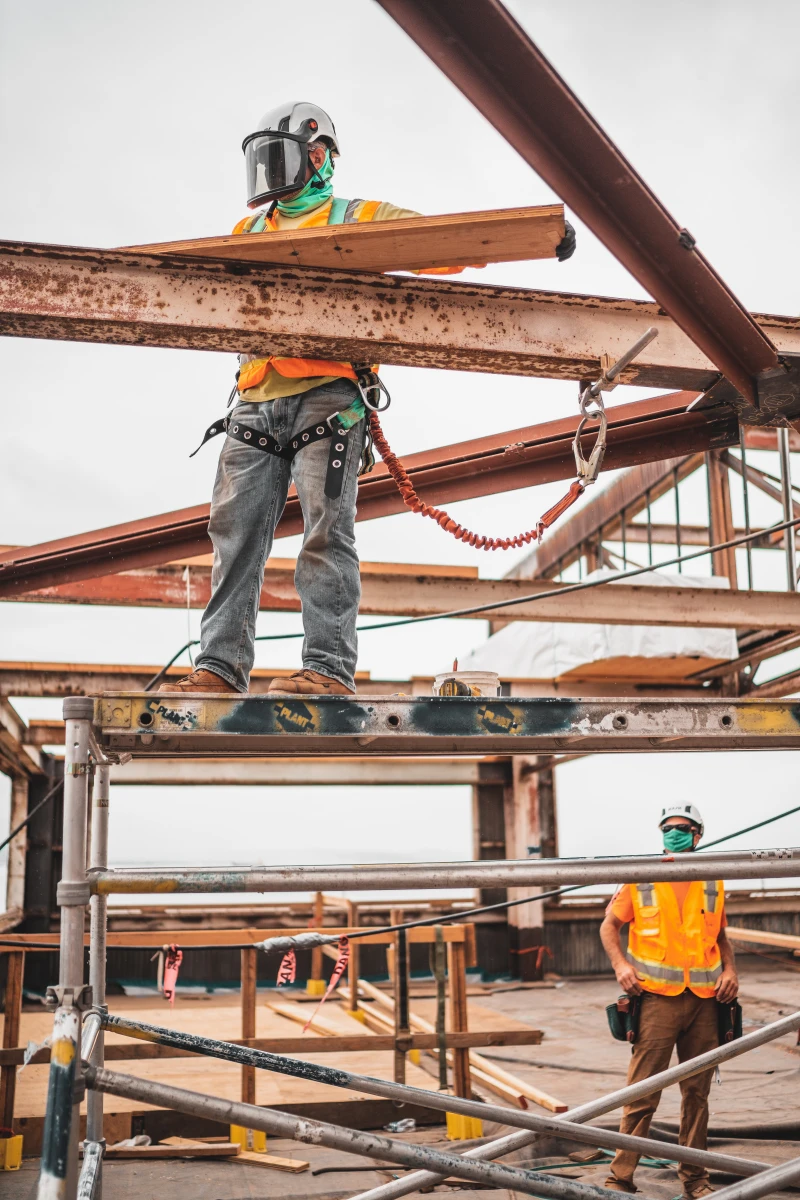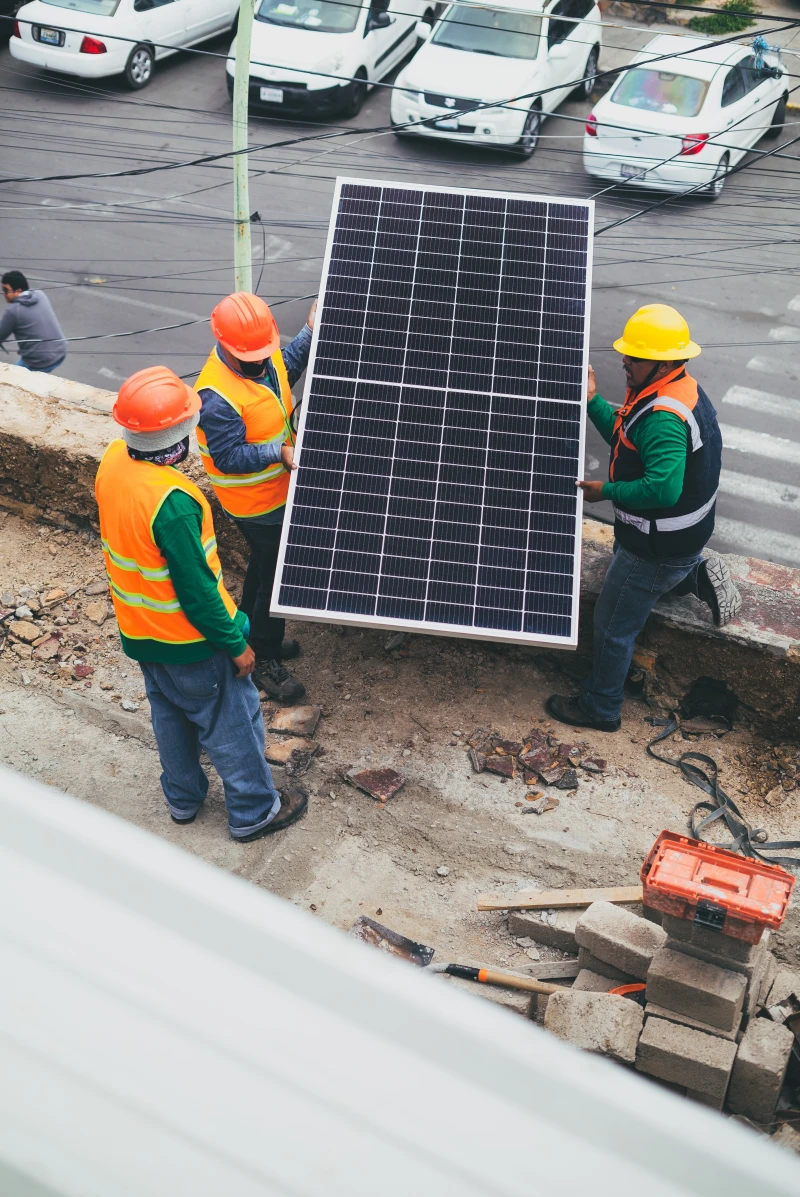Stop Torturing Your Feet: The Real-Talk Guide to Choosing Safety Trainers
I’ll never forget the first pair of safety boots I was handed on a construction site. They felt like they were carved out of concrete and weighed about as much. By the end of day one, my feet were screaming. For the longest time, that was just the deal—you traded comfort for safety. Blisters and aching arches were just part of the uniform.
In this article
Thankfully, things have gotten so much better. The arrival of safety trainers completely changed the game. At first, a lot of the old-school guys, myself included, were pretty skeptical. They looked way too much like regular sneakers. We figured they were for the supervisors who barely left the site office. How could they possibly hold up to mud, rebar, and the occasional dropped tool?
Well, we were wrong. The technology finally caught up, and modern safety trainers offer incredible protection without feeling like you’ve strapped bricks to your feet. But all this new variety creates a different kind of headache: actually choosing the right pair. It’s not just about picking your size anymore. You’ve got to understand what you’re buying, and this guide is here to walk you through it.

What’s Actually in These Shoes, Anyway?
Before you drop your hard-earned cash, you need to know what you’re looking for. Safety footwear has its own language, written in codes and standards that tell you exactly what a shoe is built to handle. Don’t worry, you don’t need to memorize a textbook, but knowing the basics will help you pick the perfect tool for your feet.
Your Toes’ Bodyguard: The Toe Cap
The absolute cornerstone of any safety shoe is the protective toe cap. Its only job is to stop your toes from getting crushed by a heavy impact. The industry standard test is intense; it involves a massive force, basically the equivalent of a 44-pound bag of cement being dropped on your foot from about three feet high. The toe cap has to prevent any serious damage.
You’ve generally got three choices when it comes to the material:
- Steel: This is the classic, old-school option. It’s incredibly strong and provides protection with the slimmest profile. The downsides? It’s the heaviest, it’ll make your toes feel like ice cubes in the winter, and it’s a guaranteed way to make friends with security every time you walk through a metal detector.
- Composite: This is the modern, metal-free choice, often made from stuff like carbon fiber, fiberglass, or tough plastic. Composite caps are significantly lighter and won’t conduct heat or cold, which is a huge bonus for comfort in extreme temperatures. They’re a must-have for electricians or anyone working in a high-security area. The only minor trade-off is they can sometimes be a bit bulkier than steel to provide the same level of protection.
- Aluminum: Think of this as the middle ground. Aluminum toe caps are much lighter than steel but just as strong. They tend to be a bit thicker than steel but not quite as chunky as composite. They’re a great all-around option but can sometimes add a little to the price tag.
Oh yeah, and here’s a hard-learned lesson for you. A toe cap is a one-time-use safety device. I once saw a guy drop a heavy beam square on his foot. The steel toe was visibly dented, but his foot was perfectly fine. He wanted to keep wearing the boots because they were “nicely broken in.” We had to explain that the boot’s job was done. Once that cap takes a major hit, its structural integrity is gone, and the footwear MUST be replaced. It saved you once; let it retire.

Protection from Below: The Midsole
Walking around a job site means navigating a minefield of nails, screws, and other sharp junk. That’s where the protective midsole comes in. It’s a layer built into the sole to stop sharp objects from punching through to your foot.
The two main players here are steel plates and woven fabric. The traditional steel plate does a great job, but it’s rigid and can make the shoe feel stiff when you’re kneeling or crouching. Modern midsoles, often made from high-tech woven fabrics like Kevlar, are a total game-changer. They are just as protective but incredibly flexible, making the trainer feel much more like a normal shoe. Plus, a fabric midsole covers the entire sole area from edge to edge, which isn’t always the case with steel plates.
Staying on Your Feet: Slip Resistance
Let’s be honest, slips and falls are one of the biggest dangers out there. A shoe’s grip is critically important. While there are official ratings for slip resistance, the most practical thing you can do is just look at the bottom of the shoe.

Quick tip: The tread pattern tells the real story. For muddy, outdoor sites, you want deep, wide lugs that can grip uneven ground and shed debris. For smooth, often wet indoor floors (think kitchens or garages), you want a pattern with lots of little slits and channels, called sipes, designed to push water out from under your foot. The material matters, too; softer rubber soles tend to grip slick surfaces better than harder plastic-feeling ones.
Getting the Fit Right is Everything
I’ve seen more people ditch their safety footwear because of a bad fit than for any other reason. If your shoes are causing blisters and pain, you’re just not going to wear them. And a safety trainer doesn’t fit like your running shoe, because that rigid toe cap doesn’t give.
Here’s how to get it right:
- Shop in the Afternoon: Your feet swell during the day. Trying on shoes later ensures you get a fit that won’t feel like a vise after a few hours on the job.
- Wear Your Work Socks: Don’t try on work shoes with thin dress socks. Bring the thick socks you actually wear to get a true-to-life fit.
- Check Toe Space: You need about a thumb’s width of space between your longest toe and the end of the toe cap. Your toes should never, ever touch the cap.
- Walk, Flex, and Crouch: Walk around the store for a few minutes. Your heel shouldn’t be slipping out. Bend down like you’re tying the laces. The shoe should flex with your foot, not pinch it.
And please, do not fall for the “I’ll break them in” trap. The leather might soften, but that protective toe cap is not changing. If it’s uncomfortable in the store, it’ll be torture on site.

By the way, here’s probably the best piece of advice in this whole article: the insole that comes with your trainer is usually a cheap, flimsy piece of foam. The single greatest comfort upgrade you can make is spending an extra $30-$50 on a quality aftermarket insole. You can find amazing gel or supportive insoles at most workwear stores or online. It is a total game-changer for anyone spending long days on hard concrete.
Match the Trainer to Your Trade
A safety trainer is a tool, and you need the right tool for the job. A generic trainer might tick the basic safety boxes, but optimizing for your work environment will make a massive difference. Expect to pay between $80 and $130 for a solid, basic pair, and anywhere from $150 to $250 for high-end, specialized models with features like waterproofing.
- For Warehouse Workers & Drivers: You’re on your feet all day on hard, flat floors. Your main needs are lightweight comfort and good cushioning. Look for an S1P-rated trainer with a composite toe to keep the weight down. Honestly, the weight difference is huge. A steel-toe trainer might weigh 650 grams, while its composite cousin is closer to 500. That doesn’t sound like much, but over 10,000 steps, that’s an extra 3,300 pounds you’re lifting with your legs every single day!
- For Plumbers, Electricians & Carpenters: You’re in varied environments, kneeling and navigating messy sites. You need flexibility and all-around protection. An S3 rating is a great starting point. A flexible fabric midsole will save your feet when you’re crouching. Plumbers should look for a WR (Water Resistant) rating for true waterproofing. And for electricians, this is CRITICAL: a composite toe is not enough. You need footwear specifically rated EH (Electrical Hazard). It’s a non-negotiable, specialist requirement.
- For Auto Mechanics: Your biggest enemy is a slippery floor covered in oil and other fluids. Your number one priority is grip. Look for a sole that is FO (Fuel and Oil Resistant) and made from a soft rubber compound. A flatter tread with lots of sipes will give you the best surface contact.
Brands like Timberland PRO, Keen Utility, and Carhartt offer great options across these categories, but always check the specific safety ratings on the shoe’s label before buying.

Know When a Trainer Isn’t Enough
As much as I love my trainers, they have limits. Be honest about your job’s risks. For heavy demolition, work around heavy machinery, or deep mud, you need the ankle support and added protection of a full-height boot. Same goes for forestry or welding—those jobs require specialized boots that a trainer simply can’t substitute.
Looking After Your Gear
Good safety trainers are an investment. A few minutes of care at the end of the day can make them last longer and perform better.
If they get wet, the golden rule is to never dry them with direct heat (like on a radiator or with a heat gun). It’ll crack the materials and destroy the adhesives. The best method is to stuff them with newspaper and let them air dry slowly. Heads up: If your boots get soaked often, investing $40 in a boot dryer that uses gentle air is one of the smartest purchases you can make. You can find them at places like Walmart or on Amazon.
When to Call It Quits
Your trainers won’t last forever. For a demanding 40-hour work week, a pair might last you 6 to 12 months. You absolutely must get a new pair if the toe cap takes a big hit, you see cracks in the sole, the tread is worn smooth, or they just don’t feel supportive anymore.
Go grab your work shoes right now. Seriously. Flip them over. Is the tread worn down like a racing tire? If so, your slip resistance is gone. It’s time to go shopping.
The cost of a new pair of trainers is nothing compared to the cost of a foot injury, lost wages, and long-term pain. Your feet carry you through your entire career. Treat them right.










